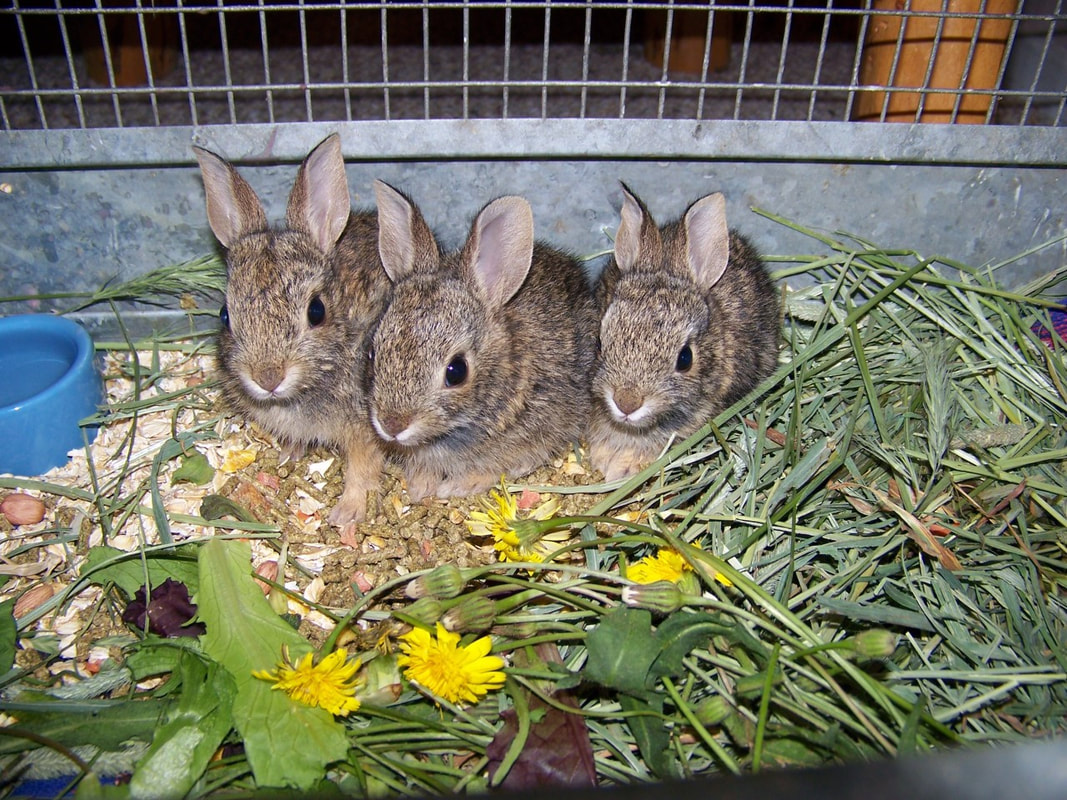October 2021 - The Brush Rabbit
|
What mammal runs in zig zags at 20 to 25 miles an hour when threatened? A brush rabbit.
This is a cottontail rabbit without the cottontail. Most cottontails have a white underside to their tail, but this one is grey. That is likely the reason “cottontail” isn’t part of its name. The brush rabbit is smaller than other cottontails. The fur on the top side can vary from gray to light brown and underneath they are usually white. They are between 11 and 14 ½ inches in length with short legs and a short tail. Females are a bit larger than the males. These rabbits are found all along the western coastal areas of North America and throughout California west of the Sierra Nevada in brushy habitat. They avoid the dry Central Valley and other arid regions. They are active year-round and are crepuscular (meaning active during dawn and dusk). Afternoons are for naps (they can sleep for 8 to 9 hours a day) and if the weather is nice, they may bask in the sun. Mostly these rabbits are solitary and live in individual home ranges. Males have a larger home range than females. Wary and secretive, they frequent burrows and tunnels. They can climb trees and scrub. If frightened, they will thump their feet, sometimes for several minutes. Sitting still can serve as protection from predators, or running in zig-zags at speeds of 20-25 miles per hour to evade them. Though not quite like a kitten, brush rabbits can purr when content. The sound is more like light chomping or quiet teeth chattering. It is probably a good thing they don’t knead like a kitten as they have 18 toenails! There are five on each front paw and four on each back paw. When they are very happy, they will run and jump, twist their body and flick their feet. Males will mate with more than one female and do not form pair bonds. Breeding occurs from December until late spring. Three litters may be produced per year with 2 to 4 young each. They use burrows of other animals or natural cavities for dens and line the den with fur or dry vegetation. Young remain in the den or a lined nest in the ground for 14 days and are fed at night. Young are mature at 4 to 5 months and are ready to breed the next season. As herbivores, brush rabbits eat mostly grasses but also other leaves, forbs, foxtails, thistles, wild rose and blackberries. They will forage alone or in small groups. Rabbits eat cecotropes which is partially digested food passed from the bunny and re-ingested. The process of feces eating is called coprophagy and is similar to a cow chewing their cud. Re-ingesting the cecotropes provides them with necessary nutrients and keeps their system running smoothly. Some species of brush rabbit are endangered likely due to loss of habitat. Tri County Wildlife Care, a local nonprofit started in 1994, is dedicated to the rescue and rehabilitation of our native wildlife and helping our community live in balance with wildlife. They envision a world where wildlife and people thrive together. For more information call (209) 283-3245, or visit pawspartners.org. |
Learn More!
|


